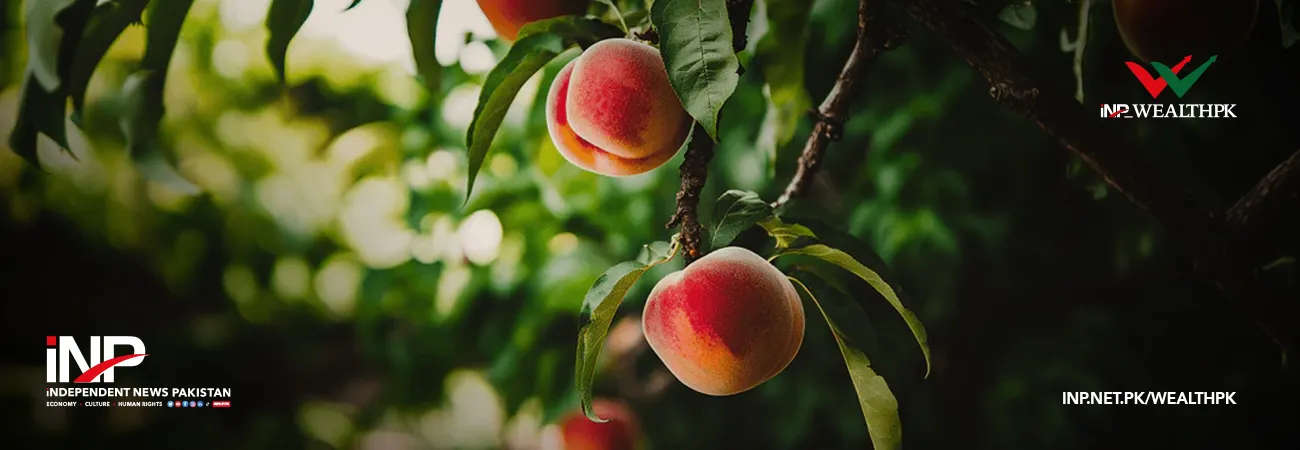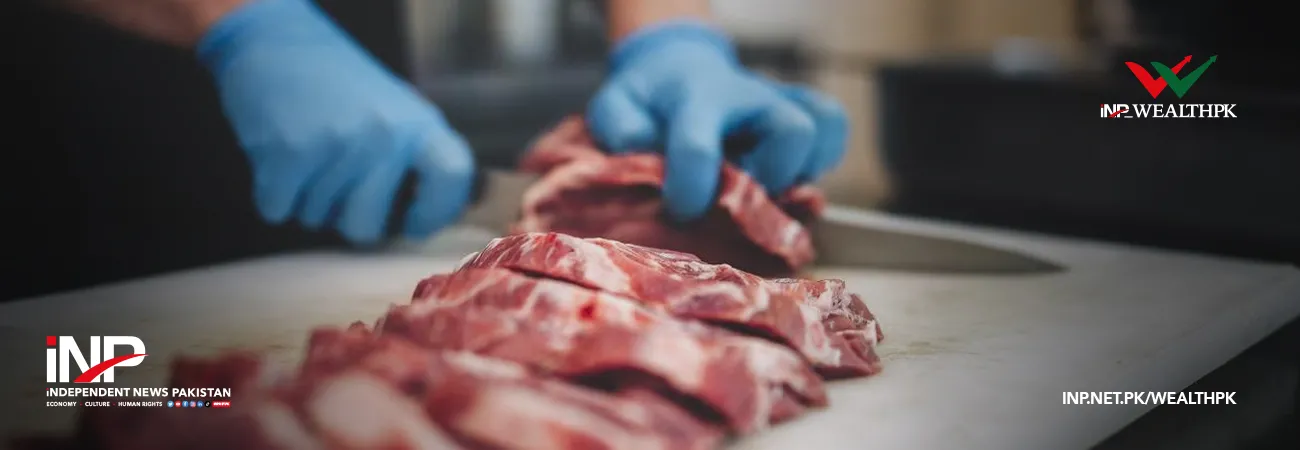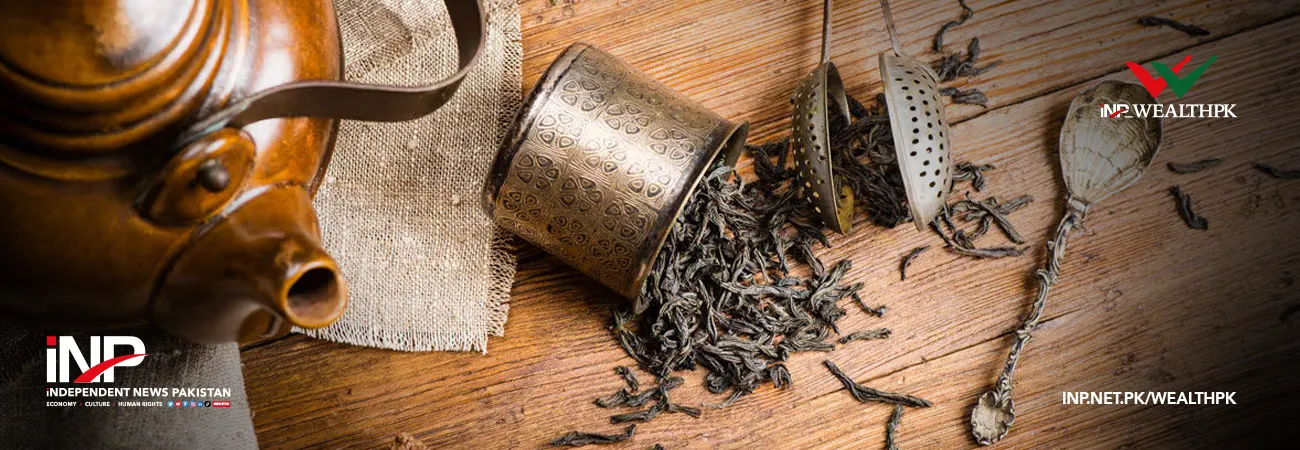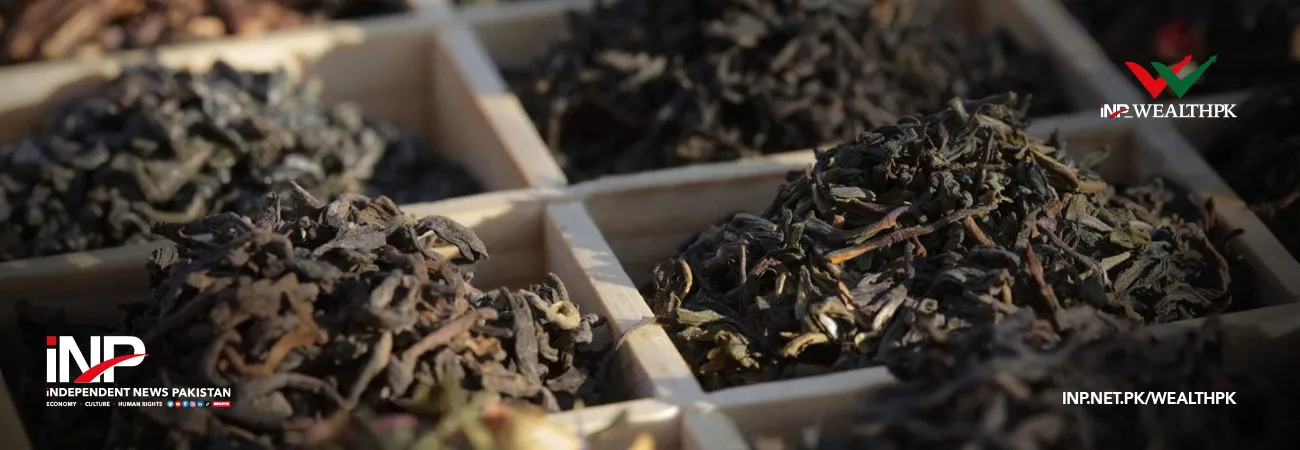INP-WealthPk
Azeem Ahmed Khan
Once a symbol of the cool northern valleys, peaches are now thriving in the warm heartland of Punjab. Traditionally associated with the scenic hills of Khyber Pakhtunkhwa, particularly Swat and Malakand, this delicate fruit is now being successfully cultivated in the hotter plains, especially in Sahiwal, Pakpattan and Okara, bringing early profits and promising futures for farmers.
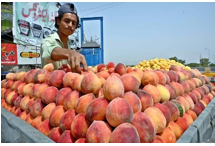
Peaches are grown on around 12,000 acres in Pakistan, yielding about 50,000 tonnes of fruit annually. But the latest innovation is not just in quantity; it is in geography. Hot regions, once dismissed as unsuitable, are now producing peaches up to two months earlier than their northern counterparts, giving farmers a unique market advantage.
Raziul Kareem Cheema, an agricultural expert and peach grower in Sahiwal, recalls the early doubt. “We did not think peaches could thrive here. But when a few of us experimented, we saw remarkable results,” he told WealthPK. Two varieties, Florida King and Early Grand, have emerged as the champions of Punjab’s peach push. Cheema notes that while the high temperatures may limit the fruit size, the taste is good.
Punjab’s peach crop enters the market in mid-April, weeks before Swat’s harvest, allowing local growers to command premium prices, up to Rs8,000 per maund early in the season, he said. Cheema emphasised proper pruning to support the fruit-laden branches of the weak-rooted peach trees. “Prune it during winter dormancy. That is when it drops leaves, and the right branches can be retained for high-quality fruit.”
Spacing is another critical factor. “While many plant trees 15x15 feet apart, I prefer 20x20 feet. It gives the tree room to grow, makes pruning easier, and increases yield,” he said. Cheema advised for timely potash application and frequent watering during the hot season. “Sprinkling water on trees not only enlarges the fruit and makes it taste good, but also prevents it from falling prematurely.”
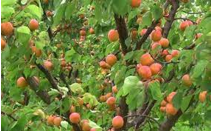
From an acre, a grower can expect around 250 to 300 maunds of peaches. With early-season prices fetching up to Rs8,000 per maund, farmers are seeing returns between Rs300,000 and Rs400,000 per acre, often within 15 days of harvest. The peach tree starts bearing fruit within two years of planting, making it a fast-return investment, he said. After the harvest, intercropping with low-water vegetables like onions or sesame helps optimise land use, he added.
“Peach is not a very difficult plant, but still challenges remain. If fertiliser and water are not used properly, they can be harmful. Secondly, its taproot is very weak, so many trees dry out suddenly. Therefore, you should have dedicated nurseries for timely replacements, as you can only obtain peach plants in February from the market. So, if you do not have your own nursery, then one year will be wasted,” Cheema said.
He also laments the lack of institutional support. “We need dedicated agricultural research centres in Punjab. Swat has one, why not us?” he asked. “We have proved this crop works here. Now it is time for the system to back us.” Meanwhile, Chaudhary Usman Razzaq, a progressive farmer in Sahiwal, also took a leap of faith when he saw a friend try peaches in the plains. “Everyone said this fruit is for the cold regions, but I planted it anyway. And now, I have a bumper crop in just four years,” he told WealthPK.
Razzaq opted for the Florida King variety, planting at 20x20 feet spacing. “Some tried 15x15 feet, but it did not work because the trees need space for air and light,” he explained. Peach farming, he said, is not excessively complex but requires discipline in watering, pruning, and fertilization. “I use 1.5kg of NPK and half a kilogramme of sulphate of potash per plant. I also spray potash twice after fruiting begins, due to which the colour, weight, and taste of the fruit are good.”
Razzaq said the peach’s biggest enemy is fruit flies. “We spray every seven days after flowering, then every four days as the fruit matures.” These protective measures cost Rs100,000-150,000 per acre, but with returns up to Rs400,000, the economics remain strong, he added. The early market arrival on April 15 gives him a strategic advantage. “No other peach is available in the country at that time, so the demand is high, and the rates are excellent.”
Razzaq is not stopping at cultivation. He is planning to open his orchard for agri-tourism, inviting families to visit, pick fruit, and learn about farming. “It is a great way to connect people with agriculture,” he said. He is also exploring value-added products, such as peach jam, chutney, and marmalade. “There is a huge potential. We need to move beyond just selling raw fruit.”
But like Raziul Kareem Cheema, Razzaq also pointed to a glaring gap, lack of research and support. “Every year, 7-8 plants per acre dry up from the stem without explanation. We have no research institute to turn to. We have had to create our own nursery system to replace dead plants.”
Both Cheema and Razzaq are united in their message: peach farming is transforming Punjab. It brings early income, rapid fruiting, and market advantages, but the government must now step in with research, training, and technical support. “Agriculture is Pakistan’s backbone,” said Cheema. “If we invest in knowledge and innovation, we can make miracles in the soil.” From mountain delicacy to plains prosperity, the peach has found a new identity, and it is just getting started.
Credit: INP-WealthPk



